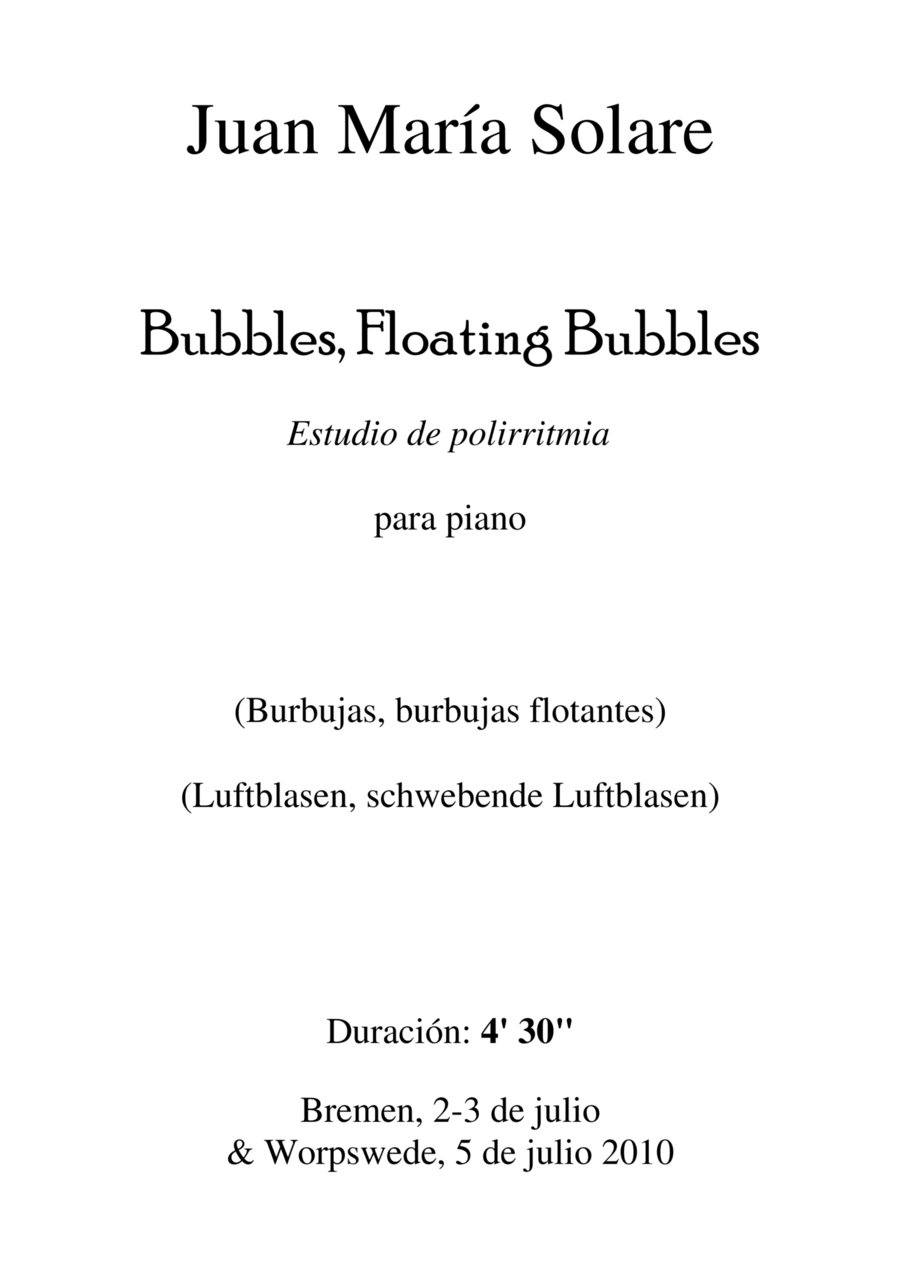Piano Solo - Level 4 - Digital Download SKU: A0.1134936 By Juan MarÃa Solare. By Juan MarÃa Solare. 20th Century,Classical,Contemporary,Instructional. Score. 8 pages. Juan Maria Solare #652301. Published by Juan Maria Solare (A0.1134936). Juan MarÃa Solare: Bubbles, Floating Bubbles - a polyrhythmic etude Concert etude composed in Bremen (2-3 July) and Worpswede (5 July 2010). Duration: 4:30 (if the repetition -from bar 28 to the end- is being played; if not, 3 minutes). Bublles, Floating Bubbles - by Juan MarÃa Solare Bubbles, Floating Bubbles on Youtube: Bubbles, Floating Bubbles on Spotify: This composition is a concert etude, since it can be performed at a recital (and not only used to practice). The degree of virtuosity is relatively low, but nevertheless not suitable for absolute beginners. Technically, the main characteristic of this piece is the polyrhythm 2 against 3: the melody subdivides the quarter in 2, and the accompaniment plays triplets. In this sense, an answer to Carl Czerny's polyrhythmic studie in E major. Please use abundant pedal when playing this piece. The idea is to generate a cloud of sound, not a machinal pattern. The sound character of this piece should be closer to Debussy than to Scarlatti. The initial indication scorrevole (fleeting) should orientate the character and the sound quality, the touch. Fermatas and caesuras should add time to the bar, like breathing in. In bar 8 (end) the silence is only in he left hand: the note of the right hand shouldn't be interrupted. This is actually clear if one read the rhythms carefully, but my experience tells me that it is prudent to underline this particular point. In bar 16 (and similar places), left hand: it is the central melody what should be in foreground, not the bass. Imagine that the melody is played by a cello or viola, and the bass by a double bass (or better: a bassoon). Try to achieve a different timbre and to separate therefore both layers. The title refers to this poem: Sum venti ingenium breve Flos sum, scilicet, aeris â¦â¦ Sum blandum, petulans, vagum, Pulchrum, purpureum, et decens, Comptum, floridulum, et recens. Richard Crashaw -Jacobean English poet- (1613-1649), Bulla (Bubble) I am the brief nature of the wind To be sure, I am the flower of air ...... I am charming, wanton, inconstant, Beautiful, gleaming, and noble, Ornate, somewhat blooming, and fresh.
